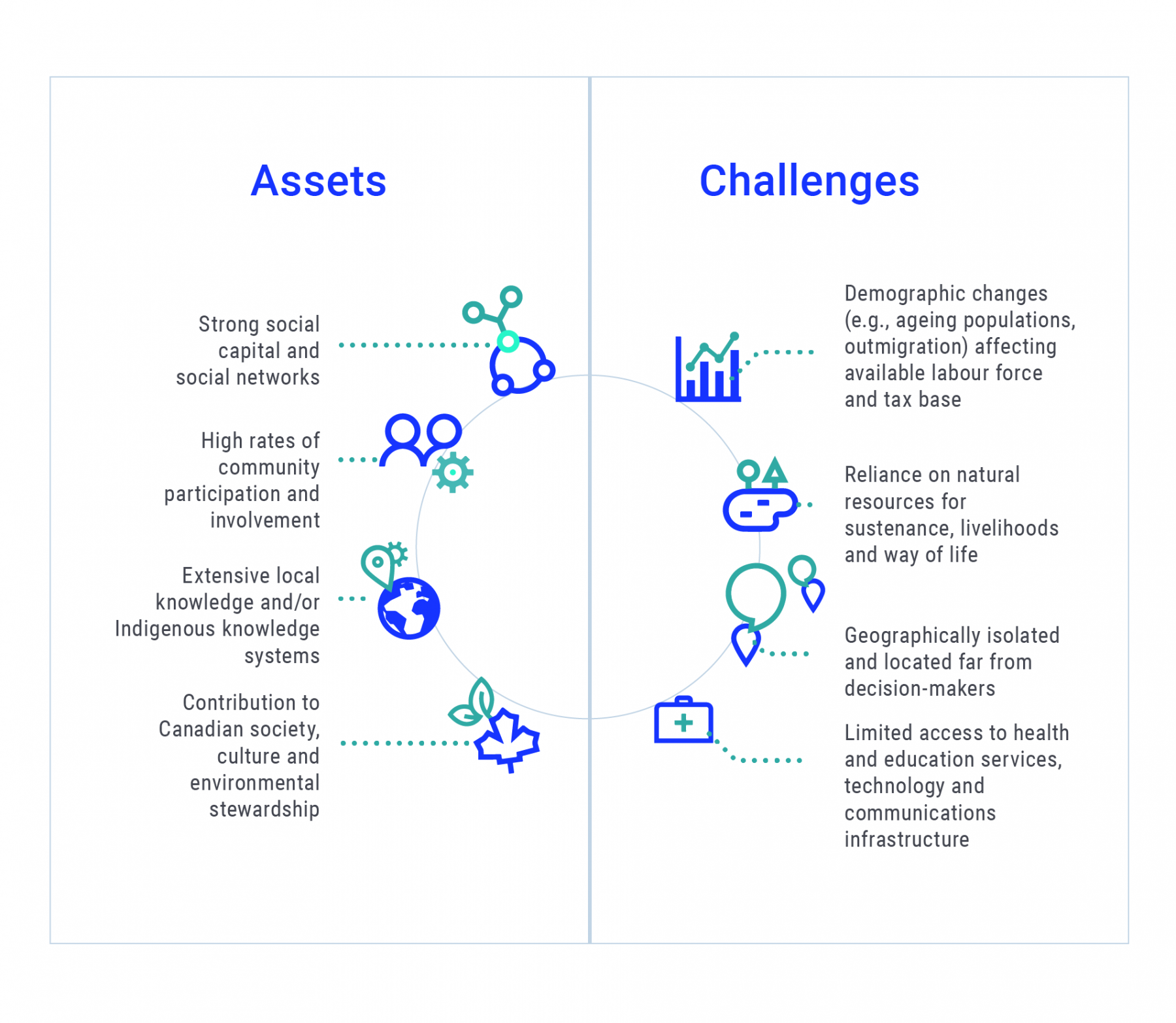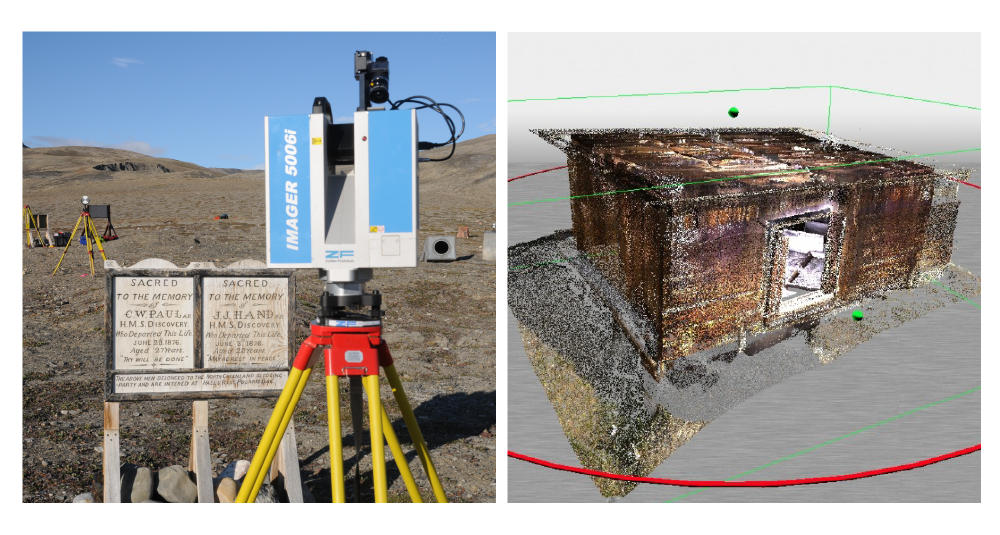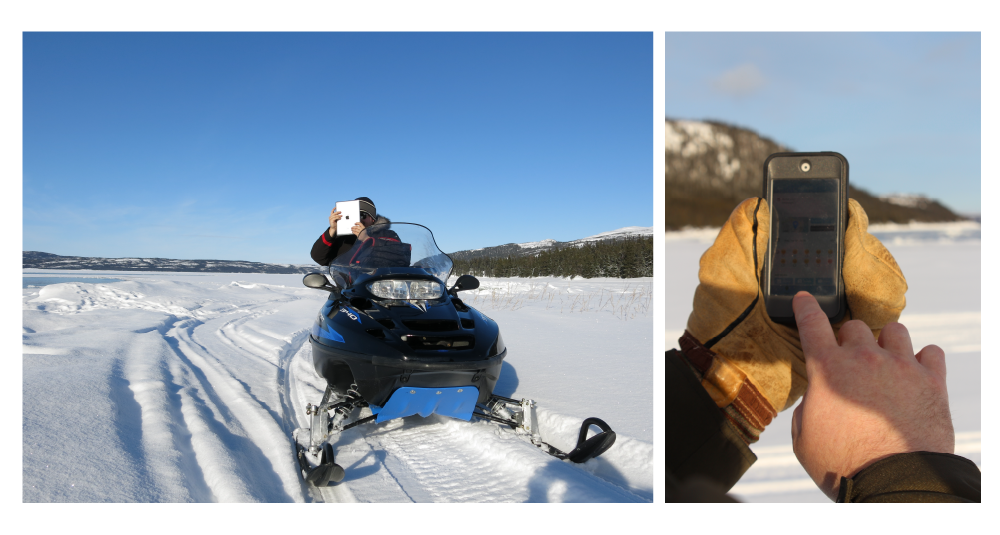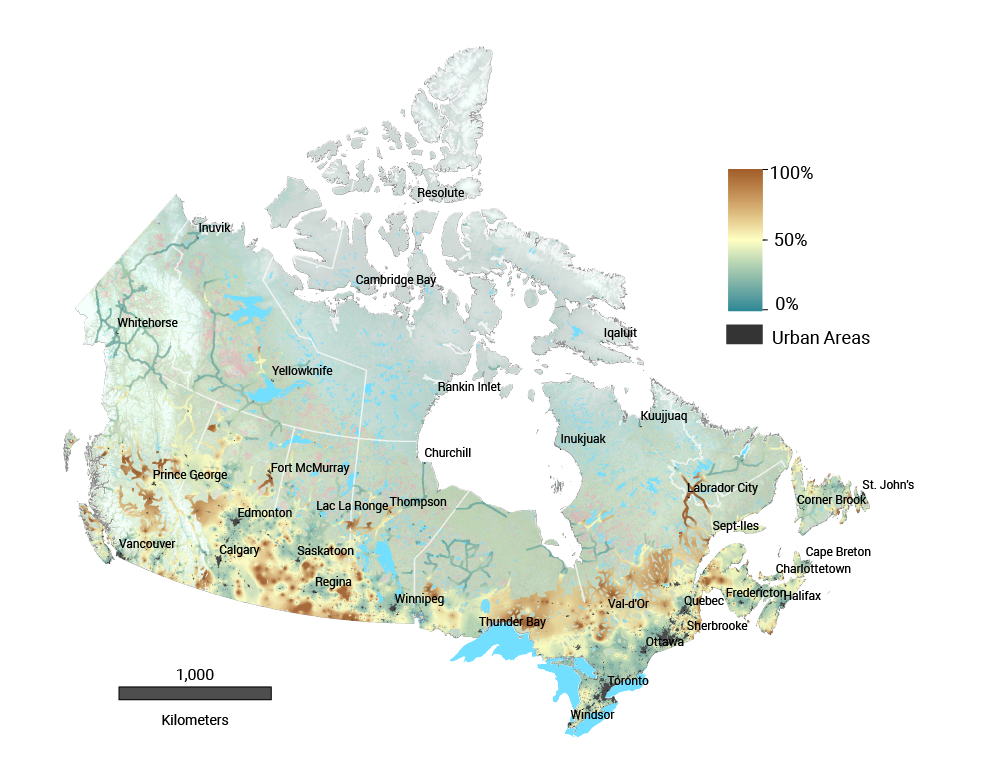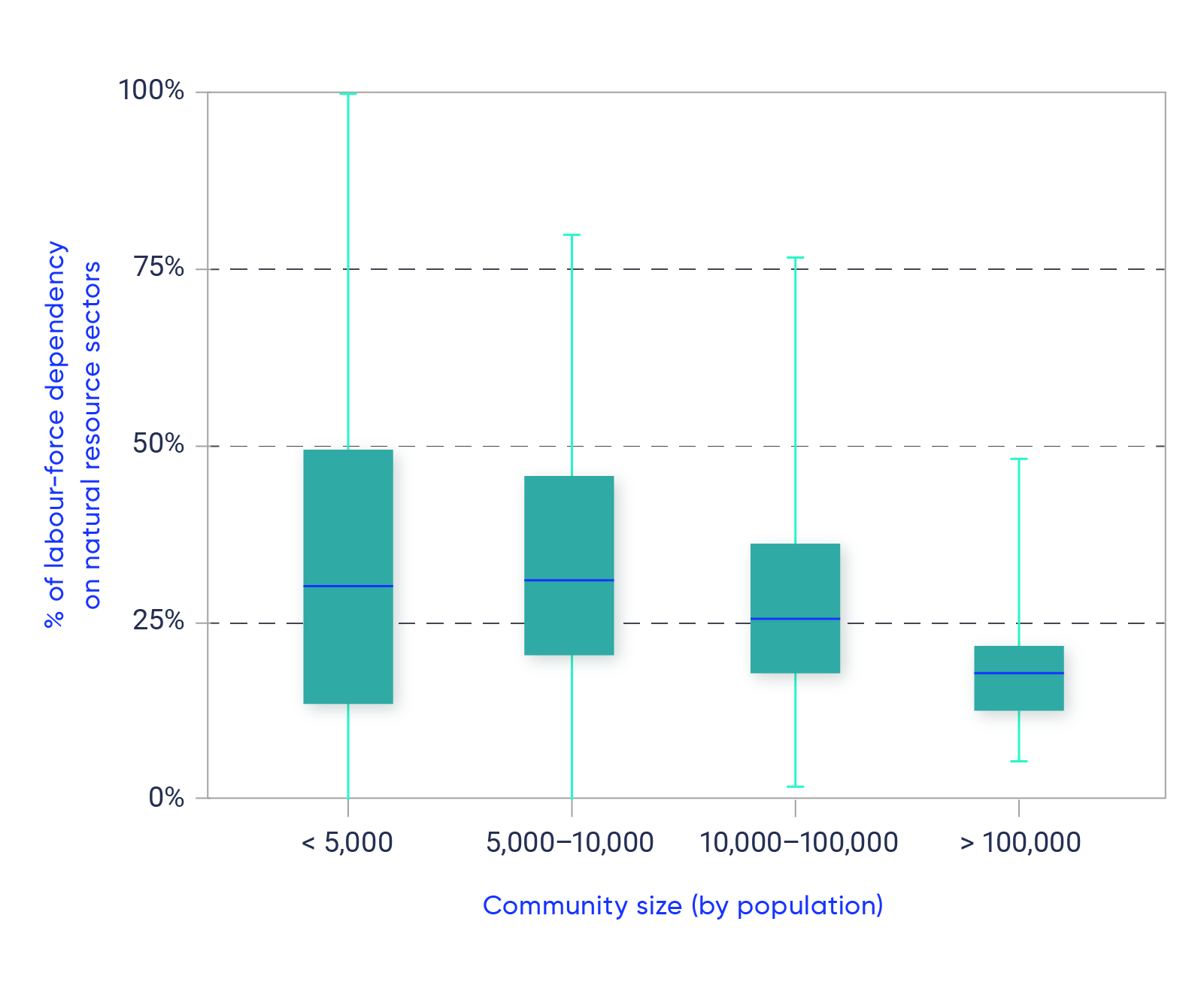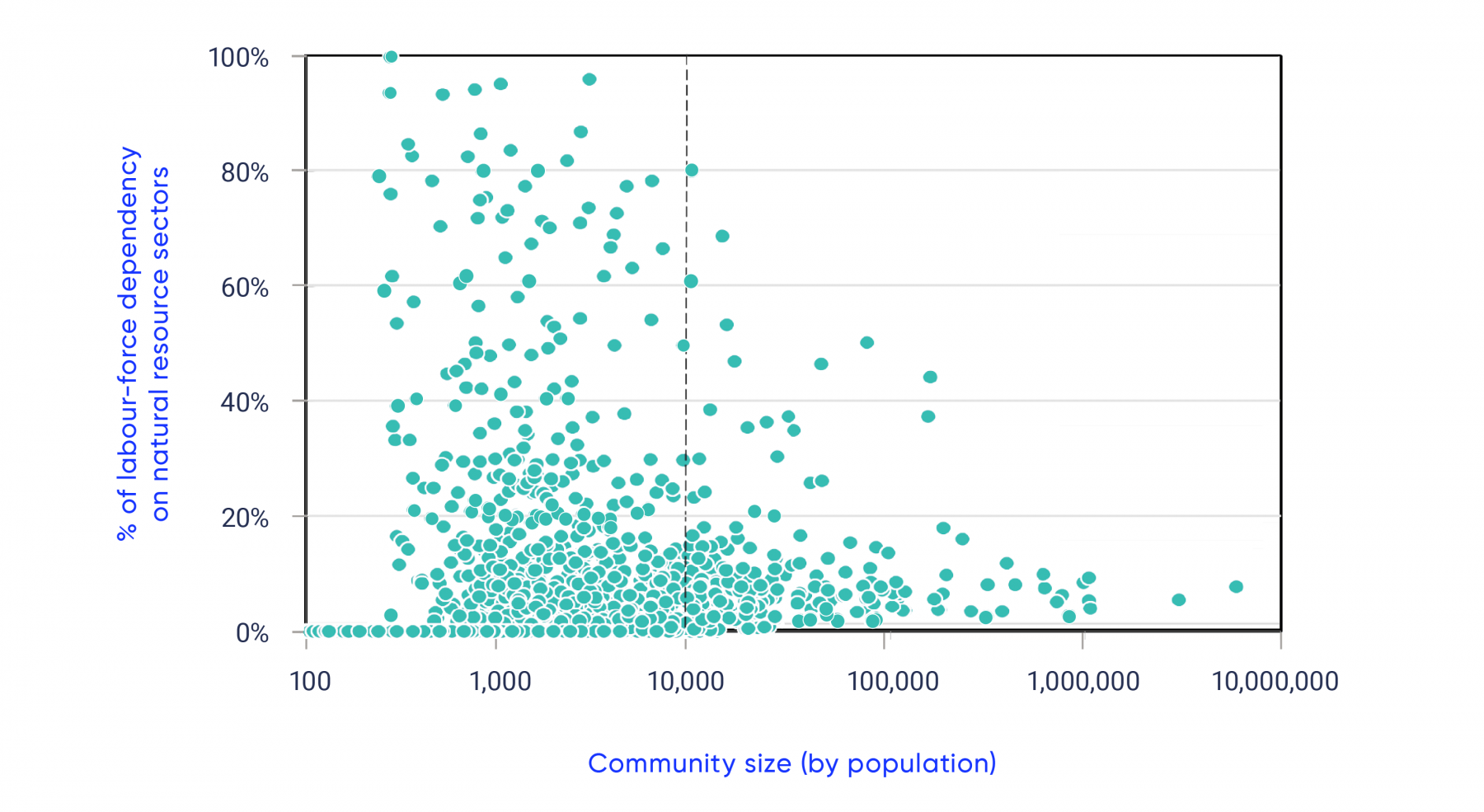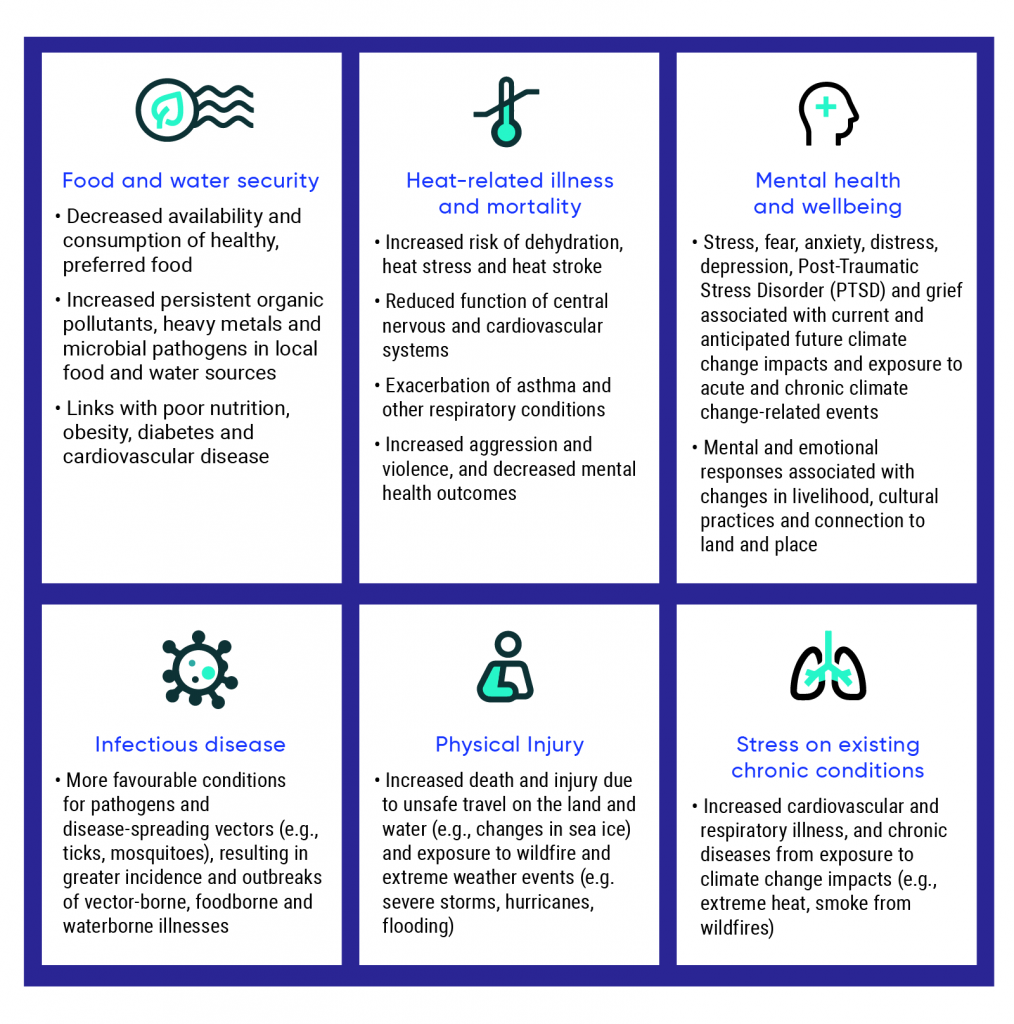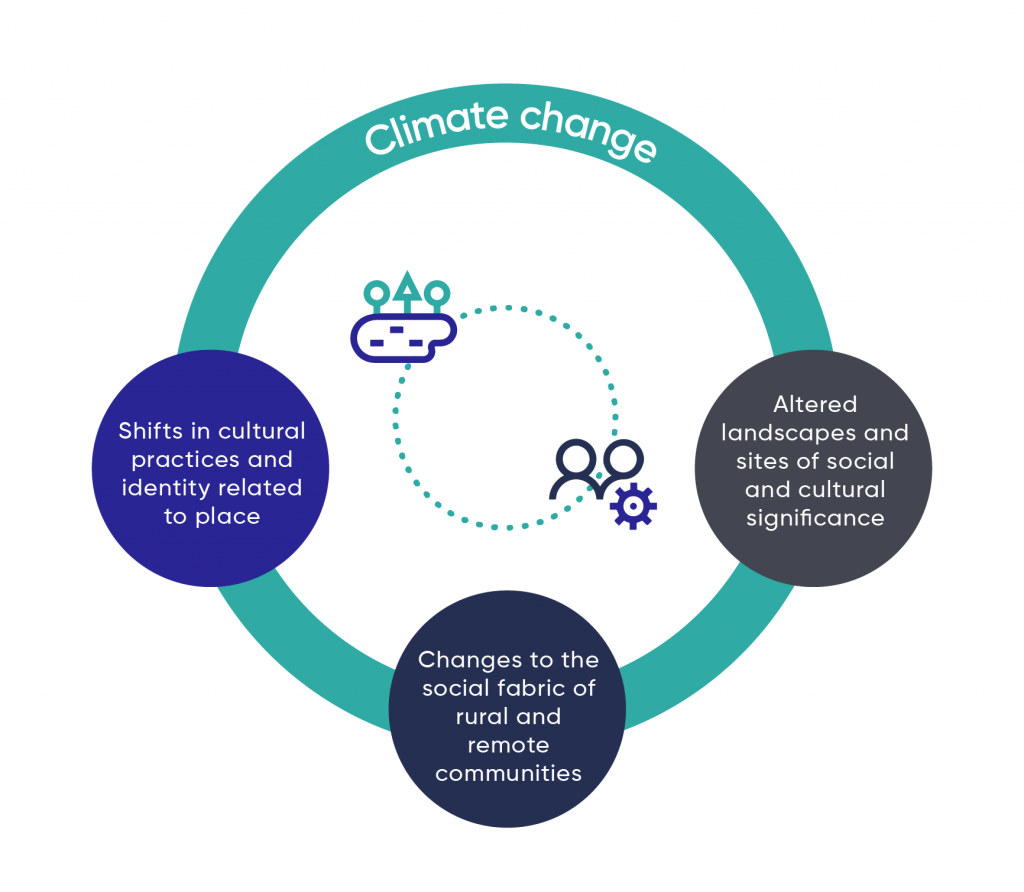Abram, N., Gattuso, J.P., Prakash, A., Cheng, L., Chidichimo, M.P., Crate, S., Enomoto, H., Garschagen, M., Gruber, N., Harper, S., Holland, E., Kudela, R.M., Rice, J., Steffen, K. and von Schuckmann, K. (2019). Summary for Policymakers, in IPCC Special Report on the Ocean and Cryosphere in a Changing Climate, (Eds.) H.-O. Pörtner, D.C. Roberts, V. Masson-Delmotte, P. Zhai, M. Tignor, E. Poloczanska, K. Mintenbeck, A. Alegría, M. Nicolai, A. Okem, J. Petzold, B. Rama and N.M. Weyer In press. Retrieved February 2020, from https://report.ipcc.ch/srocc/pdf/SROCC_FinalDraft_FullReport.pdf
Akkari, C. and Bryant, C.R. (2016). The co-construction approach as approach to developing adaptation strategies in the face of climate change and variability: A conceptual framework. Agricultural Research, 5, 162–173. Retrieved February 2020, from https://doi.org/10.1007/s40003-016-0208-8
Andrews, T.D., S.V. Kokelj, S.V., MacKay, G., Buysee, J., Kritsch, I., Andre, A. and Lantz, T. (2016). Permafrost thaw and Aboriginal cultural landscapes in the Gwich’in Region, Canada. The Journal of Preservation Technology, 47(1), 15–22. Retrieved February 2020, from https://www.gwichin.ca/publications/permafrost-thaw-and-aboriginal-cultural-landscapes-gwich%E2%80%99-region-canada
Archer L., Ford J.D., Pearce T., Kowal S., Gough W.A. and Allurut M. (2017). Longitudinal assessment of climate vulnerability: a case study from the Canadian Arctic. Sustainability Science, 12, 15–29. https://doi.org/10.1007/s11625-016-0401-5
Arnold, S. and Fenech, A. (2017). Prince Edward Island climate change adaptation recommendations report. University of Prince Edward Island Climate Lab, Charlottetown, Canada, 172 p. Retrieved February 2020, from: http://projects.upei.ca/climate/files/2018/10/PEI-Climate-Change-Adaptation-Recommendations-Report_medres.pdf
Arriaga, M., Nasr, E. and Rutherford, H. (2017). Renewable energy microgrids in northern remote communities. Institute of Electrical and Electronics Engineers Potentials, 36(5), 22–29.
Auditor General of Canada (2018). Perspectives on climate change action in Canada – a collaborative report from Auditors General. Retrieved February 2020, from http://www.oag-bvg.gc.ca/internet/English/parl_otp_201803_e_42883.html#ex6
Bakaic M. and Medeiros A.S. (2017). Vulnerability of northern water supply lakes to changing climate and demand. Arctic Science, 3(1), 1–16. Retrieved February 2020, from https://doi.org/10.1139/as-2016-0029
Barbeau C.D., Oelbermann M., Karagatzides J.D. and Tsuji L.J.S. (2015). Sustainable agriculture and climate change: producing potatoes (Solanum tuberosum L.) and bush beans (phaseolus vulgaris L.) for improved food security and resilience in a Canadian subarctic First Nations community. Sustainability, 7(5), 5664–5681. Retrieved February 2020, from https://doi.org/10.3390/su7055664
BC Agriculture and Food Climate Action Initiative (2018). About us. Retrieved February 2020, from https://www.bcagclimateaction.ca/overview/about-us/
Berner, J., Brubaker, M., Revitch, B., Kreummel, E., Tcheripanoff, M. and Bell, J. (2016). Adaptation in Arctic circumpolar communities: food and water security in a changing climate. International Journal of Circumpolar Health, 75. Retrieved February 2020, from https://10.3402/ijch.v75.33820
Bernier, R.Y., Jamieson, R.E. and Moore, A.M. (Eds.) (2018). State of the Atlantic Ocean Synthesis Report. Canadian Technical Report of Fisheries and Aquatic Sciences 3167, 149 p. Retrieved February 2020, from https://www.dfo-mpo.gc.ca/oceans/publications/soto-rceo/2018/atlantic-synthesis-atlantique-synthese/index-eng.html
Bindoff, N.L., Cheung, W.W.L. Kairo, J.G., Arístegui, J., Guinder, V.A., Hallberg, R., Hilmi, N., Jiao, N., Karim, M.S., Levin, L., O’Donoghue, S., Purca Cuicapusa, S.R., Rinkevich, B., Suga, T., Tagliabue, A. and Williamson, P. (2019). Changing ocean, marine ecosystems, and dependent communities, Chapter 5 in IPCC Special Report on the Ocean and Cryosphere in a Changing Climate, (Eds) H.O. Pörtner, D.C. Roberts, V. Masson-Delmotte, P. Zhai, M. Tignor, E. Poloczanska, K. Mintenbeck, A. Alegría, M. Nicolai, A. Okem, J. Petzold, B. Rama and N.M. Weyer. In press. Retrieved February 2020, from https://www.ipcc.ch/srocc/download/
Bishop-Williams, K.E., Berke, O., Pearl, D.L and Kelton, D.F. (2016). Mapping rural community and dairy cow heat stress in Southern Ontario: a common geographic pattern from 2010 to 2012. Archives of Environmental and Occupational Health, 71, 199–207. Retrieved February 2020, from https://doi.org/10.1080/19338244.2015.1058235
Bishop-Williams, K.E., Berke, O., Pearl D.L., Hand, K. and Kelton, D.F. (2015a). Heat stress related dairy cow mortality during heat waves and control periods in rural Southern Ontario from 2010–2012. BioMed Central Veterinary Research, 11 (291). Retrieved February 2020, from https://doi.org/10.1186/s12917-015-0607-2
Bishop-Williams K.E., Berke, O., Pearl, D.L. and Kelton, D.F. (2015b). A spatial analysis of heat stress related emergency room visits in rural Southern Ontario during heat waves. BioMed Central Emergency Medicine, 15(1), 1–9. Retrieved February 2020, from https://doi.org/10.1186/s12873-015-0043-4
Blanco, J.A., Dubois D., Littlejohn, D., Flanders, D.N., Robinson, P., Moshofsky, M. and Welham, C. (2015). Fire in the woods or fire in the boiler: implementing rural district heating to reduce wildfire risks in the forest-urban interface. Process Safety and Environmental Protection, 96, 1–13. Retrieved February 2020, from https://doi.org/10.1016/j.psep.2015.04.002
Bleau, S., Blangy, S. and Archambault, M. (2015). Adapting nature-based seasonal activities in Quebec (Canada) to climate change. Handbook of Climate Change Adaptation, 93–121. Retrieved February 2020, from https://doi.org/10.1007/978-3-642-38670-1_44
Boulanger-Lapointe, N., Gérin-lajoie, J., Collier, L. S., Desrosiers, S., Spiech, C., Henry, G. H. R. and Cuerrier, A. (2019). Berry plants and berry picking in Inuit Nunangat: traditions in a changing socio-ecological landscape. Human Ecology, 47(1), 81–93. Retrieved February 2020, from https://doi.org/10.1007/s10745-018-0044-5
Boyle, J., Cunningham, M. and Dekens, J. (2013). Climate change adaptation and Canadian infrastructure, a review of the literature. IISD Report. The International Institute for International Development. Retrieved February 2020, from https://www.iisd.org/publications/climate-change-adaptation-and-canadian-infrastructure-review-literature
Breen, S. and Rethoret, L. (2018). Co-constructing adaptation: rural capacity and addressing climate change. Retrieved February 2020, from https://grosmorneclimatesymposium.files.wordpress.com/2018/09/co-constructing-adaptation-v3-sb.pdf
Burch, S. and Harris, S. (2014). Understanding Climate Change: Science, Policy, and Practice. University of Toronto Press, Toronto, Ontario, 328 p.
Bush, E. and Lemmen, D.S. (Eds.) (2019). Canada’s changing climate report. Government of Canada, Ottawa, Ontario, 444 p. Retrieved February 2020, from https://changingclimate.ca/CCCR2019/about/
Caldwell, W.J. (Ed.) (2015). Planning for Rural Resilience: Coping with Climate Change and Energy Futures. University of Manitoba Press, Manitoba, Canada, 192 p.
Canadian Rural Revitalization Foundation (2015). State of rural Canada 2015. Retrieved February 2020, from http://sorc.crrf.ca/
Casanova-Pérez, L., Martínez-Dávila, J.P., López-Ortiz, S., Landeros-Sánchez, C. and López-Romero, G. (2016). Sociocultural dimension in agriculture adaptation to climate change. Agroecology and Sustainable Food Systems, 40(8), 848–862. Retrieved February 2020, from https://doi.org/10.1080/21683565.2016.1204582
Chapin, F. S., Sommerkorn, M., Robards, M. D. and Hillmer-Pegram, K. (2015). Ecosystem stewardship: A resilience framework for arctic conservation. Global Environmental Change, 34, 207–217. Retrieved February 2020, from https://doi.org/10.1016/j.gloenvcha.2015.07.003
Clark, D.G., Ford, J.D., Berrang-Ford, L., Pearce, T., Kowal, S. and Gough, W.A. (2016a). The role of environmental factors in search and rescue incidents in Nunavut, Canada. Public Health, 137, 44–49. Retrieved February 2020, from https://doi.org/10.1016/j.puhe.2016.06.003
Clark, D.G., Ford, J.D., Pearce T. and Berrang-Ford, L. (2016b). Vulnerability to unintentional injuries associated with land-use activities and search and rescue in Nunavut, Canada. Social Science and Medicine, 169, 18–26. Retrieved February 2020, from https://doi.org/10.1016/j.socscimed.2016.09.026
Clark, D.G. and Ford J.D. (2017). Emergency response in a rapidly changing Arctic. Canadian Medical Association Journal, 189, 135-36. Retrieved February 2020, from https://doi.org/10.1503/cmaj.161085
Clarke, C. S. L. M. and Clarke, A. J. (2018). The adaptation primers. Canadian Society of Landscape Architects (1–4). Retrieved February 2020, from https://www.csla-aapc.ca/primers
Climate Action Initiative (2013). BC farm practices & climate change adaptation. Retrieved March 2020, from https://www.bcagclimateaction.ca/wp/wp-content/media/FarmPractices-NutrientManagement.pdf
Climate Action Revenue Incentive Program (2017). Summary report on local government climate actions 2016. Retrieved February 2020, from https://www2.gov.bc.ca/assets/gov/british-columbians-our-governments/local-governments/planning-land-use/carip_2017_summary.pdf
Climate Change Nova Scotia (2018a). Health impacts. Retrieved February 2020, from https://climatechange.novascotia.ca/adapting-to-climate-change/impacts/health
Climate Change Nova Scotia (2018b). Transportation impacts. Retrieved February 2020, from https://climatechange.novascotia.ca/adapting-to-climate-change/impacts/transportation
Columbia Basin Rural Development Institute (2017). Communities of the Columbia Basin. Selkirk College. Retrieved February 2020, from http://cbrdi.ca/Communities
Columbia Basin Trust. (2015). Measuring progress on climate adaptation in the Columbia Basin. Retrieved March 2020, from http://datacat.cbrdi.ca/sites/default/files/attachments/ClimateAdaptation_Summary_11-03-15%5B1%5D.pdf
Cunsolo, A. and Ellis, N. R. (2018). Ecological grief as a mental health response to climate change-related loss. Nature Climate Change, 8(4), 275–281. Retrieved February 2020, from https://doi.org/10.1038/s41558-018-0092-2
Cunsolo, A., Shiwak, I. and Wood, M. (2017). You need to be a well-rounded cultural person: youth mentorship programs for cultural preservation, promotion, and sustainability in the Nunatsiavut Region of Labrador, Chapter in Northern Sustainabilities: Understanding and Addressing Change in the Circumpolar World, (Eds.) G. Fondahl and G.Wilson. Springer Polar Sciences, 285–303.
Cunsolo Willox, A. (2012). Climate change as the work of mourning. Ethics and the Environment, 17(2), 137–164. Retrieved February 2020, from https://www.jstor.org/stable/10.2979/ethicsenviro.17.issue-2
Cunsolo Willox, A., Harper, S.L., Ford, J.D., Edge, V., Landman, K., Houle, K., Blake, S. and Wolfrey, C. (2013a). Climate change and mental health: an exploratory case study from Rigolet, Nunatsiavut, Labrador. Climate Change, 121(2), 255–270. Retrieved February 2020, from https://doi.org/10.1007/s10584-013-0875-4
Cunsolo Willox, A., Harper, S. L., Edge, V. L., Landman, K., Houle, K. Ford, J. D., and the Rigolet Inuit Community Government (2013b). The land enriches the soul: On climatic and environmental change, affect, and emotional health and well-being in Rigolet, Nunatsiavut, Canada. Emotion, Space and Society, 6(1), 14–24. Retrieved February 2020, from http://dx.doi.org/10.1016/j.emospa.2011.08.005
Cunsolo Willox, A., Harper, S. L., Ford, J. D., Landman, K., Houle, K., Edge, V. L. and the Rigolet Inuit Community Government (2012). “From this place and of this place:” climate change, sense of place, and health in Nunatsiavut, Canada. Social Science and Medicine, 75(3), 538–547. Retrieved February 2020, from https://doi.org/10.1016/j.socscimed.2012.03.043
Cunsolo Willox, A., Stephenson, E., Allen, J., Bourque, F., Drossos, A., Elgarøy, S., Kral, M.J., Mauro, I., Moses, J., Pearce, T., MacDonald, J.P. and Wexler, L. (2015). Examining relationships between climate change and mental health in the Circumpolar North. Regional Environmental Change, 15(1), 169–182. Retrieved February 2020, from https://doi.org/10.1007/s10113-014-0630-z
Dampier, J. E. E., Chander, S., Lemelin, R.H. and Luckai, N. (2016). Assessment of potential local and regional induced economic impact of an energy policy change in rural Northwestern Ontario. Energy, Sustainability and Society, 6(14). Retrieved February 2020, from https://doi.org/10.1186/s13705-016-0079-7
Dawson, F. (2019). Sweeping closures in British Columbia for 2019 fishing season. Sea West News. Retrieved February 2020, from https://seawestnews.com/sweeping-closures-in-british-columbia-for-2019-fishing-season/
Dawson, P. and Levy, R. (2016). From science to survival: using virtual exhibits to communicate the significance of polar heritage sites in the Canadian Arctic. Open Archaeology 2(1), 209–231. Retrieved February 2020, from https://doi.org/10.1515/opar-2016-0016
Doberstein, B., Fitzgibbons, J. and Mitchell, C. (2019). Protect, accommodate, retreat or avoid (PARA): Canadian community options for flood disaster risk reduction and flood resilience. Natural Hazards, 98(1), 31–50. Retrieved February 2020, from https://doi.org/10.1007/s11069-018-3529-z
Dodd, W., Scott P., Howard, C., Scott, C., Rose, C., Cunsolo, A. and Orbinski, J. (2018). Lived experience of a record wildfire season in the Northwest Territories, Canada. Canadian Journal of Public Health, 109(3), 327–337. Retrieved February 2020, from https://doi.org/10.17269/s41997-018-0070-5
Drolet, J. L. and Sampson, T. (2017). Addressing climate change from a social development approach: Small cities and rural communities’ adaptation and response to climate change in British Columbia, Canada. International Social Work, 60(1), 61–73. Retrieved February 2020, from https://doi.org/10.1177/0020872814539984
Durkalec, A., Furgal, C., Skinner, M. W. and Sheldon, T. (2014). Investigating environmental determinants of injury and trauma in the Canadian North. International Journal of Environmental Research and Public Health, 11(2), 1536–1548. Retrieved February 2020, from https://doi.org/10.3390/ijerph110201536
Durkalec, A., Furgal, C., Skinner, M. W. and Sheldon, T. (2015). Climate change influences on environment as a determinant of Indigenous health: Relationships to place, sea ice, and health in an Inuit community. Social Science and Medicine, 136-137, 17–26. Retrieved February 2020, from https://doi.org/10.1016/j.socscimed.2015.04.026
Eddy, B.G., Muggridge, M., LeBlanc, R., Osmond, J., Kean, C. and Boyd, E. (2020a). The CanEcumene 2.0 GIS Database. Federal Geospatial Platform (FGP), Natural Resources Canada. Retrieved October 2020, from https://open.canada.ca/data/en/dataset/3f599fcb-8d77-4dbb-8b1e-d3f27f932a4b
Eddy, B., Muggridge, M., LeBlanc, R., Osmond, J., Kean, C. and Boyd, E. (2020b). An Ecological Approach for Mapping Socio-Economic Data in Support of Ecosystems Analysis: Examples in Mapping Canada’s Forest Ecumene. One Ecosystem, 5, e55881. Retrieved October 2020, from https://doi.org/10.3897/oneeco.5.e55881
Ellis, N. R. and Albrecht, G. A. (2017). Climate change threats to family farmers’ sense of place and mental well-being: A case study from the Western Australian Wheatbelt. Social Science and Medicine, 175, 161–168. Retrieved February 2020, from https://doi.org/10.1016/j.socscimed.2017.01.009
eNuk (n.d.). The eNuk environment and health monitoring program. Retrieved April 9, 2020, from www.enuk.ca.
EPCCARR [Expert Panel on Climate Change Adaptation and Resilience Results] (2018). Measuring progress on adaptation and climate resilience: Recommendations to the Government of Canada. Environment and Climate Change Canada, Ottawa, Ontario, 188 p. Retrieved February 2020, from https://www.canada.ca/en/environment-climate-change/services/climate-change/adapting/expert-panel-adaptation-resilience.html
Fawcett, D., Pearce, T., Ford, J.D. and Archer, L. (2017). Operationalizing longitudinal approaches to climate change vulnerability assessment. Global Environmental Change, 45, 79–88. Retrieved February 2020, from https://doi.org/10.1016/j.gloenvcha.2017.05.002
Federation of Canadian Municipalities (2018a). Rural challenges, national opportunity: Shaping the future of Canada. Retrieved February 2020, from https://fcm.ca/sites/default/files/documents/resources/report/rural-challenges-national-opportunities.pdf
Federation of Canadian Municipalities (2018b). Year 2 annual progress report: Municipalities for Climate Innovation Program. Retrieved February 2020, from https://fcm.ca/sites/default/files/documents/resources/report/annual-progress-report-yr2-mcip.pdf
Federation of Canadian Municipalities and Insurance Bureau of Canada (2019). Investing in Canada’s future: The cost of climate adaptation. Retrieved February 2020, from http://assets.ibc.ca/Documents/Disaster/The-Cost-of-Climate-Adaptation-Summary-EN.pdf
Félio, G. (2017). Climate change impacts on water and wastewater infrastructure at Akwesasne. Retrieved February 2020, from https://pievc.ca/sites/default/files/climate-change-impacts-water-wastewater-akwesasne-05-18-e.pdf
Fletcher, A. J. and Knuttila, E. (2016). Gendering change: Canadian farm women respond to drought, Chapter 7 in Vulnerability and Adaptation to Drought: The Canadian Prairies and South America. University of Calgary Press, Calgary, Alberta, 159–177.
Ford, J. D., Cameron, L., Rubis, J., Maillet, M., Nakashima, D., Willox, A. C. and Pearce, T. (2016). Including Indigenous knowledge and experience in IPCC assessment reports. Nature Climate Change, 6(4), 349–353. Retrieved February 2020, from https://doi.org/10.1038/nclimate2954
Ford, J. D., Champalle, C., Tudge, P., Riedlsperger, R., Bell, T. and Sparling, E. (2015). Evaluating climate change vulnerability assessments: A case study of research focusing on the built environment in northern Canada. Mitigation and Adaptation Strategies for Global Change, 20(8), 1267–1288. Retrieved February 2020, from https://doi.org/10.1007/s11027-014-9543-x
Ford, J. D., Labbé, J., Flynn, M. Araos, M., and IHACC Research Team (2017). Readiness for climate change adaptation in the Arctic: A case study from Nunavut, Canada. Climate Change, 145, 85–100. Retrieved February 2020, from https://doi.org/10.1007/s10584-017-2071-4
Ford, J. D., Cunsolo Willox, A., Chatwood, S., Furgal, C., Harper, S., Mauro, I. and Pearce, T. (2014). Adapting to the effects of climate change on Inuit health. American Journal of Public Health, 104(3), 9–17. Retrieved February 2020, from https://doi.org/10.2105/AJPH.2013.301724
FRWIP [Farm and Ranch Water Infrastructure Program] (n.d.). Saskatchewan farm and ranch water infrastructure program. Retrieved April 9, 2020, from https://www.saskatchewan.ca/business/agriculture-natural-resources-and-industry/agribusiness-farmers-and-ranchers/canadian-agricultural-partnership-cap/environmental-sustainability-and-climate-change/farm-and-ranch-water-infrastructure-program-frwip
FSP [Farm Stewardship Program] (n.d.). Saskatchewan farm stewardship program. Retrieved April 9, 2020, from https://www.saskatchewan.ca/business/agriculture-natural-resources-and-industry/agribusiness-farmers-and-ranchers/canadian-agricultural-partnership-cap/environmental-sustainability-and-climate-change/farm-stewardship-program-fsp
Furness, E. and Nelson, H. (2016). Are human values and community participation key to climate adaptation? The case of community forest organizations in British Columbia. Climatic Change, 135, 243–259. Retrieved February 2020, from https://doi.org/10.1007/s10584-015-1564-2
Gerbaux, M., Spandre, P., François, H., George, E. and Morin, S. (2020). Snow Reliability and Water Availability for Snowmaking in the Ski resorts of the Isère Département (French Alps), Under Current and Future Climate Conditions. Revue de géographie alpine, 108(1). Retrieved December 2020, from https://doi.org/10.4000/rga.6742
Gilaberte-Búrdalo, M., López-Martín, F., Pino-Otín, M. and López-Moreno, J. (2014). Impacts of climate change on ski industry. Environmental Science and Policy, 44, 51–61. Retrieved February 2020, from https://doi.org/10.1016/j.envsci.2014.07.003
Gill, H. and Lantz, T. (2014). A community-based approach to mapping Gwich’in observations of environmental changes in the Lower Peel River Watershed, Northwest Territories. Journal of Ethnobiology, 34(3), 294–314. Retrieved February 2020, from https://doi.org/10.2993/0278-0771-34.3.294
Goodridge, D. and Marciniuk, D. (2016). Rural and remote care: Overcoming the challenges of distance. Chronic Respiratory Disease, 13(2), 192–203. Retrieved February 2020, from https://doi.org/10.1177/1479972316633414
Government of Canada (2016). The Pan-Canadian Framework on clean growth and climate change. Ottawa, Ontario, Canada. Retrieved February 2020, from https://www.canada.ca/content/dam/themes/environment/documents/weather1/20170125-en.pdf
Government of Canada (2017). Budget of 2017: Chapter 2, communities built for change. Retrieved February 2020, from https://www.canada.ca/content/dam/themes/environment/weather/climatechange/PCF-FirstSynthesis_ENG.pdf
Government of Canada (2018). A just transition for Canadian coal power workers and communities. Retrieved February 2020, from http://publications.gc.ca/pub?id=9.867000&sl=0
Government of Canada (2020). Critical infrastructure. Retrieved February 2020, from https://www.publicsafety.gc.ca/cnt/ntnl-scrt/crtcl-nfrstrctr/index-en.aspx
Government of Manitoba (2017). A made-in-Manitoba climate and green plan: Hearing from Manitobans. Retrieved February 2020, from http://www.gov.mb.ca/asset_library/en/climatechange/climategreenplandiscussionpaper.pdf
Government of Northwest Territories (2016). Environment economy and climate change commitment progress report. Retrieved February 2020, from https://www.eia.gov.nt.ca/en/mandates/economy-environment-and-climate-change.
Government of Northwest Territories (2017). Climate change strategic framework 2018–2030: Draft for public comment. Retrieved February 2020, from https://www.enr.gov.nt.ca/sites/enr/files/resources/final_pdf_nwt_ccsf_draft_for_public_comment_nov_29_2017.pdf
Government of Ontario (2016). Ontario’s Five year Climate Change Action Plan 2016–2017. Retrieved February 2020, from https://www.ontario.ca/page/climate-change-action-plan
Government of Saskatchewan (2017). Prairie resilience: A made-in-Saskatchewan climate change strategy. Retrieved February, 2020, from https://www.saskatchewan.ca/business/environmental-protection-and-sustainability/a-made-in-saskatchewan-climate-change-strategy
Groulx, M. (2017). “Other people’s initiatives”: Exploring mediation and appropriation of place as barriers to community-based climate change adaptation. Local Environment, 22(11), 1378–1393. Retrieved February 2020, from https://doi.org/10.1080/13549839.2017.1348343
Groulx, M., Lewis, J., Lemieux, C. and Dawson, J. (2014). Place-based climate change adaptation: A critical case study of climate change messaging and collective action in Churchill, Manitoba. Landscape and Urban Planning, 132, 136–147. Retrieved February 2020, from https://dx.doi.org/10.1016/j.landurbplan.2014.09.002
Hall, C.M., Baird, T., James, M. and Ram, Y. (2016). Climate change and cultural heritage: Conservation and heritage tourism in the Anthropocene. Journal of Heritage Tourism, 11(1), 10–24. Retrieved February 2020, from https://doi.org/10.1080/1743873X.2015.1082573
Hanrahan, M., Sarkar, A. and Hudson, A. (2014). Exploring water insecurity in a northern indigenous community in Canada: The “never-ending job” of the Southern Inuit of Black Tickle, Labrador. Arctic Anthropology, 51(2), 9–22. Retrieved February 2020, from https://www.jstor.org/stable/24475826
Harneet, G. and Lantz, T. (2014). A community-based approach to mapping Gwich’in observations of environmental changes in the lower Peel River Watershed, NT. Journal of Ethnobiology, 34(3), 294–314. Retrieved February 2020, from https://doi.org/10.2993/0278-0771-34.3.294
Harper, S. L., Edge, V. L., Schuster-Wallace, C. J., Berke, O. and McEwen, S. A. (2011). Weather, water quality and infectious gastrointestinal illness in two Inuit communities in Nunatsiavut, Canada: Potential implications for climate change. EcoHealth, 8(1), 93–108. Retrieved February 2020, from https://doi.org/10.1007/s10393-011-0690-1
Harper, S. L., Edge, V. L. and Willox, A. C. (2012). ‘Changing climate, changing health, changing stories’ profile: Using an EcoHealth approach to explore impacts of climate change on Inuit health. EcoHealth, 9(1), 89–101. Retrieved February 2020, from https://doi.org/10.1007/s10393-012-0762-x
Harper, S. L., Edge, V. L., Ford, J., Cunsolo Willox, A., Wood, M., Indigenous Health Adaptation to Climate Change Research Team, Rigolet Inuit Community Government, and McEwen, S. (2015). Climate-sensitive health priorities in Nunatsiavut, Canada. BioMed Central Public Health, 15(1), 605. Retrieved February 2020, from https://doi.org/10.1186/s12889-015-1874-3
Hatcher, S. V. and Forbes, D. L. (2015). Exposure to coastal hazards in a rapidly expanding northern urban centre, Iqaluit, Nunavut. Arctic Institute of North America, 68(4), 453–471. Retrieved February 2020, from www.jstor.org/stable/43871361
Healthy Lake Huron (2019). Healthy Lake Huron: clean water, clean beaches. Retrieved February 2020, from http://www.healthylakehuron.ca/about/
Hock, R., Rasul, G., Adler, C., Cáceres, B., Gruber, S., Hirabayashi, Y., Jackson, M., Kääb, A., Kang, S., Kutuzov, S., Milner, A., Molau, U., Morin, S., Orlove, B. and Steltzer, H. (2019). High Mountain Areas, Chapter 2 in IPCC Special Report on the Ocean and Cryosphere in a Changing Climate, (Eds.) H.-O. Pörtner, D.C. Roberts, V. Masson-Delmotte, P. Zhai, M. Tignor, E. Poloczanska, K. Mintenbeck, A. Alegría, M. Nicolai, A. Okem, J. Petzold, B. Rama and N.M. Weyer. Retrieved February 2020, from https://www.ipcc.ch/srocc/chapter/chapter-2/
Holsman, K., Hollowed, A., Ito, S. I., Bograd, S., Hazen, E., King, J., Mueter, F. and Perry, R. I. (2019). Climate change impacts, vulnerabilities and adaptations: North Pacific and Pacific Arctic marine fisheries, Chapter 6 in Impacts of climate change on fisheries and aquaculture synthesis of current knowledge, adaptation and mitigation options, (Eds.) M. Barange, T. Bahri, M.C.M. Bereridge, K.L. Cochrane, S. Finge-Smith and F. Poulain. Food and Agriculture Organization of the United Nations, 19–39. Retrieved February 2020, from http://www.fao.org/3/i9705en/i9705en.pdf
Horning, D., Bauer, B. O. and Cohen, S. J. (2016a). Missing bridges: Social network (dis)connectivity in water governance. Utilities Policy, 43, 59–70. Retrieved February 2020, from http://dx.doi.org/10.1016%2Fj.jup.2016.06.006
Horning, D., Bauer, B. O. and Cohen, S. J. (2016b). Watershed governance for rural communities: Aligning network structure with stakeholder vision. Journal of Rural and Community Development, 11(2), 45–71. Retrieved February 2020, from https://journals.brandonu.ca/jrcd/article/view/1453/305
Huitema, D., Adger, W. N., Berkhout, F. Massey, E., Mazmanian, D., Munaretto, S., Plummer, R. and Termeer, C. C. J. A. M. (2016). The governance of adaptation: Choices, reasons, and effects. Introduction to the Special Feature. Ecology and Society, 21(3), 37. Retrieved February 2020, from http://dx.doi.org/10.5751/ES-08797-210337
Hurlbert, M. and Pittman, J. (2014). Exploring adaptive management in environmental farm programs in Saskatchewan, Canada. Journal of Natural Resources Policy Research, 6(2–3), 195–212. Retrieved February 2020, from https://doi.org/10.1080/19390459.2014.915131
IllikKuset-Illingannet Team (2014). Introducing the IllikKuset-Illingannet/Culture-Connect Program. Retrieved April 9, 2010, from https://www.youtube.com/watch?v=EAulcH3uXnc
Indigenous and Northern Affairs Canada (2017). 2017–2018 Departmental Plan. Ottawa, Ontario, Canada. Retrieved February 2020, from: https://www.canada.ca/content/dam/polar-polaire/documents/pdf/POLAR_PAA_Based_2017-18_DP_FINAL_ENG.pdf
Infrastructure Canada (2018). Communities across Canada receive support for green innovation, climate change resiliency, and infrastructure planning initiatives. Ottawa, Ontario, Canada. Retrieved February 2020, from https://www.newswire.ca/news-releases/communities-across-canada-receive-support-for-green-innovation-climate-change-resiliency-and-infrastructure-planning-initiatives-700926721.html
IPCC [Intergovernmental Panel on Climate Change] (2014). Part B: Regional Aspects (Contribution of Working Group II to the Fifth Assessment Report of the Intergovernmental Panel on Climate Change) in Climate Change 2014: Impacts, adaptation, and vulnerability, (Eds.) V.R. Barros, C.B. Field, J.D. Dokke, M.D. Mastrandrea, K.J. Mach, T.E. Bilir, M. Chatterjee, K.L. Ebi, Y.O. Estrada, R.C. Genova, B. Girma, E.S. Kissel, A.N. Levy, S. MacCracken, P.R. Mastrandrea and L.L. White. Cambridge University Press, Cambridge, United Kingdom and New York, New York, 688-1132. Retrieved February 2020, from https://www.ipcc.ch/report/ar5/wg2/
IPCC [Intergovernmental Panel on Climate Change] (2018). Global Warming of 1.5 °C: IPCC special report on the impacts of global warming of 1.5 °C above pre-industrial levels and related global greenhouse gas emission pathways, in the context of strengthening the global response to the threat of climate change, sustainable development, and efforts to eradicate poverty, in Summary for Policy Makers. Retrieved February 2020, from http://report.ipcc.ch/sr15/pdf/sr15_spm_final.pdf
Irvine, M., Vodden, K. and Keenan, R. (2016). Developing assessment and adaptation capacity: Integrating climate change considerations into municipal planning in Newfoundland and Labrador, Chapter 6 in Sustainability Planning and Collaboration in Rural Canada: Taking the Next Steps, (Eds.) L. Hallstrom, M. Beckie, G. Hvenegaard and K. Mündel. University of Alberta Press, Edmonton, Alberta, 117–144.
Johnson, R. (2019). Saugeen Ojibway Nation confronts effects of climate change on whitefish fishery. Retrieved April 9, 2020, from https://www.cbc.ca/news/indigenous/saugeen-ojibway-whitefish-fishery-climate-change-1.4982666.
Johnston, M.E., Dawson, J. and Maher, P.T. (2017). Strategic development challenges in marine tourism in Nunavut. Resources, 6(3), 25. Retrieved February 2020, from https://doi.org/10.3390/resources6030025
King, M., Altdorff, D., Li, P., Galagedara, L., Holden, J. and Unc, A. (2018). Northward shift of the agricultural climate zone under 21st-century global climate change. Scientific Reports, 8(1), 7904. Retrieved February 2020, from https://www.nature.com/articles/s41598-018-26321-8.pdf
Kipp, A., Cunsolo, A., Gillis, D., Sawatzky, A., Wood, M. and Harper, S. (2019). The need for community-led, integrated, and innovative monitoring programs when responding to the health impacts of climate change. International Journal of Circumpolar Health, 78(2). Retrieved February 2020, from https://doi.org/10.1080/22423982.2018.1517581
Knowles, J. (2016). Power Shift: Electricity for Canada’s remote communities. The Conference Board of Canada, Ottawa. Retrieved February 2020, from https://www.conferenceboard.ca/e-Library/document.aspx?did=8249
Kornfeld, I.E. (2016). The impact of climate change on American and Canadian Indigenous peoples and their water resources: A climate justice perspective. Hebrew University of Jerusalem Legal Research Paper No. 17–32. Retrieved February 2020, from https://dx.doi.org/10.2139/ssrn.2832879
Krawchenko, T., Keefe, J., Manuel, P. and Rapaport, E. (2016). Coastal climate change, vulnerability and age friendly communities: Linking planning for climate change to the age friendly communities agenda. Journal of Rural Studies, 44, 55–62. Retrieved February 2020, from https://doi.org/10.1016/j.jrurstud.2015.12.013
Lament for the Land (2014). Lament for the Land film. Retrieved February 2020, from http://www.lamentfortheland.ca/film/
Larsen, R.K., Swartling, Å.G., Powell, N., May, B., Plummer, R., Simonsson, L. and Osbeck, M. (2012). A framework for facilitating dialogue between policy planners and local climate change adaptation professionals: Cases from Sweden, Canada and Indonesia. Environment, Science and Policy, 23, 12–23. Retrieved February 2020, from http://dx.doi.org/10.1016/j.envsci.2012.06.014
Lebel, D. (2014). Infrastructure Canada report on plans and priorities. Retrieved February 2020, from: http://publications.gc.ca/collections/collection_2014/infc/T91-2-2014-eng.pdf
Lemmen, D.S.,Warren, F.J., Lacroix, J. and Bush, E. (Eds.) (2008). From impacts to adaptation: Canada in a changing climate. Government of Canada, Ottawa, Ontario, 448 p. Retrieved February 2020, from https://www.nrcan.gc.ca/impacts-adaptation-canada-changing-climate/10253
Lieske, D.J. (2015). Coping with climate change: The role of spatial decision support tools in facilitating community adaptation. Environmental Modelling Software, 68, 98–109. Retrieved February 2020, from http://dx.doi.org/10.1016/j.envsoft.2015.02.005
Lieske, D.J., Wade, T. and Roness, A.L. (2014). Climate change awareness and strategies for communicating the risk of coastal flooding: A Canadian Maritime case example. Estuarine and Coast Shelf Science, 140, 83–94. Retrieved February 2020, from http://dx.doi.org/10.1016/j.ecss.2013.04.017
Loring, P. A. and Gerlach, S. C. (2015). Searching for progress on food security in the North American North: A research synthesis and meta-analysis of the peer-reviewed literature. Arctic, 68(3), 380–392. Retrieved February 2020, from http://dx.doi.org/10.14430/arctic4509
Manuel, P., Rapaport, E., Keefe, J. and Krawchenko, T. (2015). Coastal climate change and aging communities in Atlantic Canada: A methodological overview of community asset and social vulnerability mapping. Canadian Geographer, 59(4), 433–446. Retrieved February 2020, from https://doi.org/10.1111/cag.12203
McMartin, D.W. and Merino, B.H.H. (2014). Analysing the links between agriculture and climate change: can “best management practices” be responsive to climate extremes? International Journal of Agricultural Resources, Governance and Ecology, 10(1), 50. http://doi.org/10.1504/IJARGE.2014.061042
Medeiros, A.S., Wood, P., Wesche, S.D., Bakaic, M. and Peters, J.F. (2017). Water security for northern peoples: review of threats to Arctic freshwater systems in Nunavut, Canada. Regional Environmental Change, 17(3), 635–647. Retrieved February 2020, from http://dx.doi.org/10.1007/s10113-016-1084-2
Meredith, M., Sommerkorn, M., Cassotta, S., Derksen, C., A. Ekaykin, A., Hollowed, A., Kofinas, G. Mackintosh, A., Melbourne-Thomas, J., Muelbert, M.M.C., Ottersen, G., Pritchard, H. and Schuur, E.A.G. (2019). Polar Regions, Chapter 3 in IPCC Special Report on the Ocean and Cryosphere in a Changing Climate, (Eds.) H.-O. Pörtner, D.C. Roberts, V. Masson-Delmotte, P. Zhai, M. Tignor, E. Poloczanska, K. Mintenbeck, A. Alegría, M. Nicolai, A. Okem, J. Petzold, B. Rama and Weyer, N.M. In press. Retrieved February 2020, from https://www.ipcc.ch/srocc/chapter/chapter-3-2
Messner, S. (2020). Future Arctic shipping, black carbon emissions, and climate change, Chapter 11 in Maritime Transport and Regional Sustainability. (Eds.) K.Y. Adolf, J.M. Ng, C. Jiang. Elsevier Incorporated, 195–208. Retrieved February 2020, from https://doi.org/10.1016/C2018-0-04694-0
Middleton, J., Cunsolo, A., Jones-Bitton, A., Wright, C. and Harper S.L. (2020). Indigenous mental health in a changing climate: A systematic scoping review of the global literature. Environmental Research Letters, 15(5). Retrieved December 2020, from https://doi.org/10.1088/1748-9326/ab68a9.
Minnes, S. and Vodden, K. (2019). Introduction, Chapter 1 in The Theory, Practice, and Potential of Regional Development: The Case of Canada, (Eds.) K. Vodden, D. Douglas, S. Markey, S. Minnes and B. Reimer. Routledge, London, United Kingdom, 1–11.
Mortensen, L., Hansen, A.M. and Shestakov, A. (2017). How three key factors are driving and challenging implementation of renewable energy systems in remote Arctic communities. Polar Geography, 40(3), 163–185. Retrieved December 2020, from https://doi.org/10.1080/1088937X.2017.1329758
Mullan, D., Swindles, G., Patterson, T., Galloway, J., Macumber, A., Falck, H., Crossley, L., Chen, J. and Pisaric, M. (2017). Climate change and the long-term viability of the world’s busiest heavy haul ice road. Theoretical and Applied Climatology, 129(3–4), 1089–1108. Retrieved February 2020, from https://doi.org/10.1007/s00704-016-1830-x
Nicol, L.A. and Nicol, C.J. (2018). Adoption of precision agriculture to reduce inputs, enhance sustainability and increase food production: A study of southern Alberta, Canada, Chapter in Sustainable development and planning, (Eds.) G. Passerini and N. Marchettini. WIT Press, Boston, Massachusetts, United States, 327–336.
Northwest Territories Legislative Assembly (2018). 2030 NWT Climate Change Strategic Framework. Retrieved February 2020, from http://library.assembly.gov.nt.ca/2018/ENR/a382207_td_211-183_2030_NWT_Climate_Change_Strategic_Framework.pdf
Nova Scotia Department of Environment and Climate Change (2018). Climate change impacts: Transportation. Retrieved February 2020, from https://climatechange.novascotia.ca/adapting-to-climate-change/impacts/transportation
Natural Resources Canada (2015). Preparing for Storm Surges in Annapolis Royal, Nova Scotia. Retrieved February 2020, from https://www.nrcan.gc.ca/environment/resources/publications/impacts-adaptation/tools-guides/16303
Natural Resources Canada (2018a). Remote communities energy database. The Atlas of Canada. Retrieved February 2020, from https://atlas.gc.ca/rced-bdece/en/index.html
Natural Resources Canada (2018b). Mountain pine beetle. Retrieved February 2020, from https://www.nrcan.gc.ca/forests/fire-insects-disturbances/top-insects/13381
Odland, J. O., Donaldson, S., Dudarev, A. and Carlsen, A. (2015). Arctic monitoring and assessment program [AMAP] assessment 2015: Human health in the Arctic. International Journal of Circumpolar Health, 75(1). Retrieved February 2020, from http://doi.org/10.3402/ijch.v75.33949
Oxford County Council (2015). Future Oxford: Our path towards sustainability. Retrieved February 2020, from: http://futureoxford.ca/general/sustainabilityplan/pdf/2015_FutureOxford_CommunitySustainabilityPlan.pdf
Pagano, A., Pluchinotta, I., Giordano, R. and Fratino, U. (2018). Integrating “hard” and “soft” infrastructural resilience assessment for water distribution systems. Complexity, 2018, 1–16. Retrieved February 2020, from https://doi.org/10.1155/2018/3074791
Parewick, K. (2018). BAM! NL – Building asset management here. Retrieved February 2020, from https://grosmorneclimatesymposium.com/day-2/
Pearce, C. and Callihoo, C. (2011). Pathways to climate change resilience: A guidebook for Canadian forest-based communities. Retrieved February 2020, from https://www.researchgate.net/profile/David_Natcher/publication/275011321_Linking_gender_climate_change_adaptive_capacity_and_forest-based_communities_in_Canada/links/56709ce608ae5252e6f1f39e/Linking-gender-climate-change-adaptive-capacity-and-forest-based-communities-in-Canada.pdf?origin=publication_detail
Pearce, T., Ford, J.D., Caron, A. and Kudlak, B.P. (2012). Climate change adaptation planning in remote, resource-dependent communities: An Arctic example. Regional Environmental Change, 12(4), 825–837. Retrieved February 2020, from https://doi.org/10.1007/s10113-012-0297-2
Pearce, T., Ford, J., Cunsolo Willox, A. and Smit, B. (2015). Inuit Traditional Ecological Knowledge (TEK), subsistence hunting and adaptation to climate change in the Canadian Arctic. Arctic, 68(2), 233–245. Retrieved February 2020, from http://www.jstor.org/stable/43871322
Picketts, I.M., Parkes, M.W. and Déry, S.J. (2017). Climate change and resource development impacts in watersheds: Insights from the Nechako River Basin, Canada. The Canadian Geographer, 61(2), 196–211. Retrieved February 2020, from https://doi.org/10.1111/cag.12327
Pizzolato, L., Howell, S.E.L., Derksen, C., Dawson, J. and Coplan, L. (2014) Changing sea ice conditions and marine transportation activity in Canadian Arctic waters between 1990 and 2012. Climate Change, 123, 161–173. Retrieved February 2020, from https://doi.org/10.1007/s10584-013-1038-3
Province of New Brunswick (2016). Transitioning to a low-carbon economy: New Brunswick’s climate change action plan. Retrieved February 2020, from https://www2.gnb.ca/content/dam/gnb/Departments/env/pdf/Climate-Climatiques/TransitioningToALowCarbonEconomy.pdf
Public Health Agency of Canada (2017). Climate change impacts on the health of Canadians. Retrieved February 2020, from http://publications.gc.ca/collections/collection_2017/aspc-phac/HP5-122-2017-eng.pdf
Rapaport, E., Manuel, P., Krawchenko, T. and Keefe, J. (2015). How can aging communities adapt to coastal climate change? Planning for both social and place vulnerability. Canadian Public Policy, 41(2), 166–177. Retrieved February 2020, from http://doi.org/10.3138/cpp.2014-055
Reed, M.G., Scott, A., Natcher, D. and Johnston, M. (2014). Linking gender, climate change, adaptive capacity, and forest-based communities in Canada. Canadian Journal of Research, 44(9), 995-1004. Retrieved February 2020, from http://doi.org/10.1139/cjfr-2014-0174
Rojas-Downing, M.M., Nejadhashemi, A.P., Harrigan, T. and Woznicki, S.A. (2017). Climate change and livestock: Impacts, adaptation, and mitigation. Climate Risk Management, 16, 145–163. Retrieved December 2020, from https://doi.org/10.1016/j.crm.2017.02.001
Roussin, R., Wilson, J., Utzig, G. and Lavkulich, L. (2015). Assessing the potential for pocket agriculture in mountainous regions: A case study in West Kootenay, British Columbia, Canada. Journal of Agriculture, Food Systems, and Community Development, 6(1), 175–188. Retrieved February 2020, from http://dx.doi.org/10.5304/jafscd.2015.061.016
Rutty, M., Scott, D., Johnson, P., Pons, M., Steiger, R. and Vilella, M. (2017). Using ski industry response to climatic variability to assess climate change risk: An analogue study in Eastern Canada. Tourism Management, 58, 196–204. Retrieved February 2020, from https://doi.org/10.1016/j.tourman.2016.10.020
Sauchyn, D. (2017). Climate change adaptation on the farm and ranch. Policy Options. Retrieved February 2020, from: http://policyoptions.irpp.org/magazines/may-2017/climate-change-adaptation-on-the-farm-and-ranch/.
Savo, V., Morton, C. and Lepofsky, D. (2017). Impacts of climate change for coastal fishers and implications for fisheries. Fish and Fisheries, 18(5), 877–889. Retrieved February 2020, from https://doi.org/10.1111/faf.12212
Sawatzky, A., Cunsolo, A., Gillis, D., Shiwak, I., Flowers, C., Cook, O., Wood, M., the Rigolet Inuit Community Government, and Harper, S. (2017). Profiling the eNuk program: An Inuit-led strategy for monitoring and responding to the impacts of environmental change on health and well-being in Rigolet, Nunatsiavut. Northern Public Affairs, 5(2). Retrieved February 2020, from http://www.northernpublicaffairs.ca/index/wp-content/uploads/2017/07/npa_5_2_july_2017_pg18-22.pdf
Schroth, O., Pond, E. and Sheppard, S. R. (2015). Evaluating presentation formats of local climate change in community planning with regard to process and outcomes. Landscape Urban Planning, 142, 147–158. Retrieved February 2020, from https://doi.org/10.1016/j.landurbplan.2015.03.011
Science and Survival at Fort Conger (2015). Why we’re still fascinated by Fort Conger. Retrieved February 2020, from http://fortconger.org
Shaw, A., Burch, S., Kristensen, F., Robinson, J. and Dale, A. (2014). Accelerating the sustainability transition: Exploring synergies between adaptation and mitigation in British Columbian communities. Global Environmental Change, 25(1), 41–51. Retrieved February 2020, from http://dx.doi.org/10.1016/j.gloenvcha.2014.01.002
Sorensen, C. (2016). How snowless ski resorts are adapting to climate change. MacLeans. Retrieved February 2020, from: https://www.macleans.ca/economy/business/how-snowless-ski-resorts-are-adapting-to-climate-change/
Statham, S., Ford, J., Berrang-Ford, L., Lardeau, M.P., Gough, W. and Siewierski, R. (2015). Anomalous climatic conditions during winter 2010–2011 and vulnerability of the traditional Inuit food system in Iqaluit, Nunavut. Polar Record, 51(3), 301–317. Retrieved February 2020, from https://doi.org/10.1017/S0032247414000151
Statistics Canada (2016). Census of population. Ottawa, Ontario, Canada. Retrieved February 2020, from https://www12.statcan.gc.ca/census-recensement/2016/dp-pd/prof/details/page.cfm?Lang=E&Geo1=CSD&Geo2=PR&Code2=01&SearchType=Begins&SearchPR=01&TABID=1&B1=All&type=0&Code1=3506008&SearchText=ottawa
Stoddart M.C.J. and Sodero S. (2015). From fisheries decline to tourism destination: Mass media, tourism mobility, and the Newfoundland coastal environment. Mobilities, 10(3), 445–465. Retrieved February 2020, from https://doi.org/10.1080/17450101.2013.860281
Studio 531(2019). Tofino indoor recreation centre. Retrieved February 2020, from https://tofino.civicweb.net/filepro/document/91262/Recreation%20Facility%20Design%20Report.pdf
Sullivan, I. (2018). Impacts of climate change on Qalipu First Nation communities. Retrieved February 2020, from https://grosmorneclimatesymposium.files.wordpress.com/2018/09/impactclimatechangeqfn_slides.pdf
Taylor, M.M. (2019). Public health solutions to rural health disparities, Chapter 3 in Rural Health Disparities. Springer, 25–35. Retrieved February 2020, from https://link.springer.com/book/10.1007%2F978-3-030-11467-1
The Ontario Bar Association (2015). Ontario’s climate change discussion paper. Ottawa, Ontario, Canada. Retrieved February 2020, from https://www.oba.org/CMSPages/GetFile.aspx?guid=f35f4dbb-ea42-4178-aa28-a7835e80b568
Tschakert, P., Barnett, J., Ellis, N., Lawrence, C., Tuana, N., New, M., Elrick-Barr, C., Pandit, R. and Pannell, D. (2017). Climate change and loss, as if people mattered: Values, places, and experiences. Wiley Interdisciplinary Reviews: Climate Change, 8(5). Retrieved February 2020, from https://doi.org/10.1002/wcc.476
Tschakert, P., Ellis, N., Anderson, C., Kelly, A. and Obeng, J. (2019). One thousand ways to experience loss: A systematic analysis of climate-related intangible harm from around the world. Global Environmental Change, 55, 55–72. Retrieved February 2020, from https://doi.org/10.1016/j.gloenvcha.2018.11.006
Vasseur, L., Thornbush, M. and Plante, S. (2015). Gender-based experiences and perceptions after the 2010 winter storms in Atlantic Canada. International Journal of Environmental Research and Public Health, 12(10), 12518–12529. Retrieved February 2020, from https://dx.doi.org/10.3390%2Fijerph121012518
Vasseur, L., Thornbush, M. and Plante, S. (2017). Climatic and environmental changes affecting communities in Atlantic Canada. Sustainability, 9(8), 1–10. Retrieved February 2020, from https://doi.org/10.3390/su9081293
Vodden, K., Douglas, D., Minnes, S., Markey, S., Reimer, B. and Breen, S. (2019). Conclusions: Implications for policy and practice, Chapter in The Theory, Practice, and Potential of Regional Development: The Case of Canada, (Eds.) K. Vodden, D. Douglas, S. Markey, S. Minnes and B. Reimer, Routledge, London, United Kingdom, 212–234. Retrieved February 2020, from https://doi.org/10.4324/9781351262163
Vodden, K., Catto, N., Irvine, M., Parewick, K. and Renaud, N. (2012). 7 Steps to Assess Climate Change Vulnerability in Your Community. Memorial University, Department of Geography. Prepared for the Atlantic Canada Adaptation Solutions Association and the Department of Environment & Conservation, 1–278: https://www.turnbackthetide.ca/pdf/7_Steps_Tool.pdf
Warren, F.J. and Lemmen, D.S., (Eds.) (2014). Canada in a Changing Climate: Sector Perspectives on Impacts and Adaptation. Government of Canada, Ottawa, Ontario, 286 p. Retrieved February 2020, from https://www.nrcan.gc.ca/sites/www.nrcan.gc.ca/files/earthsciences/pdf/assess/2014/pdf/Full-Report_Eng.pdf
Weatherdon, L.V., Magnan, A.K., Rogers, A.D., Sumaila, U.R. and Cheung, W.W.L. (2016). Observed and projected impacts of climate change on marine fisheries, aquaculture, coastal tourism, and human health: An update. Frontiers in Marine Science 3(48). Retrieved February 2020, from https://doi.org/10.3389/fmars.2016.00048
Webster, Tim. L. (2010). Flood risk mapping using LiDAR for Annapolis Royal, Nova Scotia, Canada. Remote Sensing, 2(9), 2060–2082. Retrieved February 2020, from: https://doi.org/10.3390/rs2092060
Webster, T., McGuigan, K., Collins, K. and MacDonald, C. (2014). Integrated river and coastal hydrodynamic flood risk mapping of the Lahave River estuary and town of Bridgewater, Nova Scotia, Canada. Water, 6(3), 517–546. Retrieved February 2020, from https://doi.org/10.3390/w6030517
Williams L., Fletcher A., Hanson, C., Neapole, J. and Pollack, M. (2018). Women and climate change impacts and action in Canada. Retrieved February 2020, from: https://www.criaw-icref.ca/images/userfiles/files/Women%20and%20Climate%20Change_FINAL.pdf
Wolf, J., Allice, I. and Bell., T. (2012). Values, climate change, and implications for adaptation: Evidence from two communities in Labrador, Canada. Global Environmental Change, 23(2), 548–562. Retrieved February 2020, from https://doi.org/10.1016/j.gloenvcha.2012.11.007
Women’s Environment and Development Organization (2018). Climate change and gender in Canada: A review. Retrieved February 2020, from: https://wedo.org/wp-content/uploads/2018/04/GGCA-CA-RP-07.pdf
World Wildlife Fund (2019). Canadian Arctic greywater report: Estimates, forecasts and treatment technologies. Retrieved February 2020, from http://d2akrl9rvxl3z3.cloudfront.net/downloads/wwf_canada_grey_water_report_2018_1.pdf
Young, S., Tabish, T., Pollock, N. and Young, T. (2016). Backcountry travel emergencies in Arctic Canada: A pilot study in public health surveillance, International Journal of Environmental Research and Public Health, 13(3), 276. Retrieved February 2020, from https://doi.org/10.3390/ijerph13030276
Yukon Legislative Assembly (2017). Fall sitting. Number 32, 2nd session, 34th legislature. Retrieved February 2020, from https://yukonassembly.ca/sites/default/files/inline-files/Journals-34-2-2017-10-03-2017-11-27.pdf
Yusa, A., Berry, P., Cheng, J., Ogden, N., Bonsal, B., Stewart, R. and Waldick, R. (2015). Climate change, drought and human health in Canada. International Journal of Environmental Research and Public Health, 12(7), 8359–8412. Retrieved February 2020, from https://doi.org/10.3390/ijerph120708359
4-H Ontario. (n.d.). Field crops, weeds, insects, and disease. Retrieved April 9, 2020, from https://4-hontario.ca/youth/club-projects/field-crops-weeds-insects-diseases-project/
